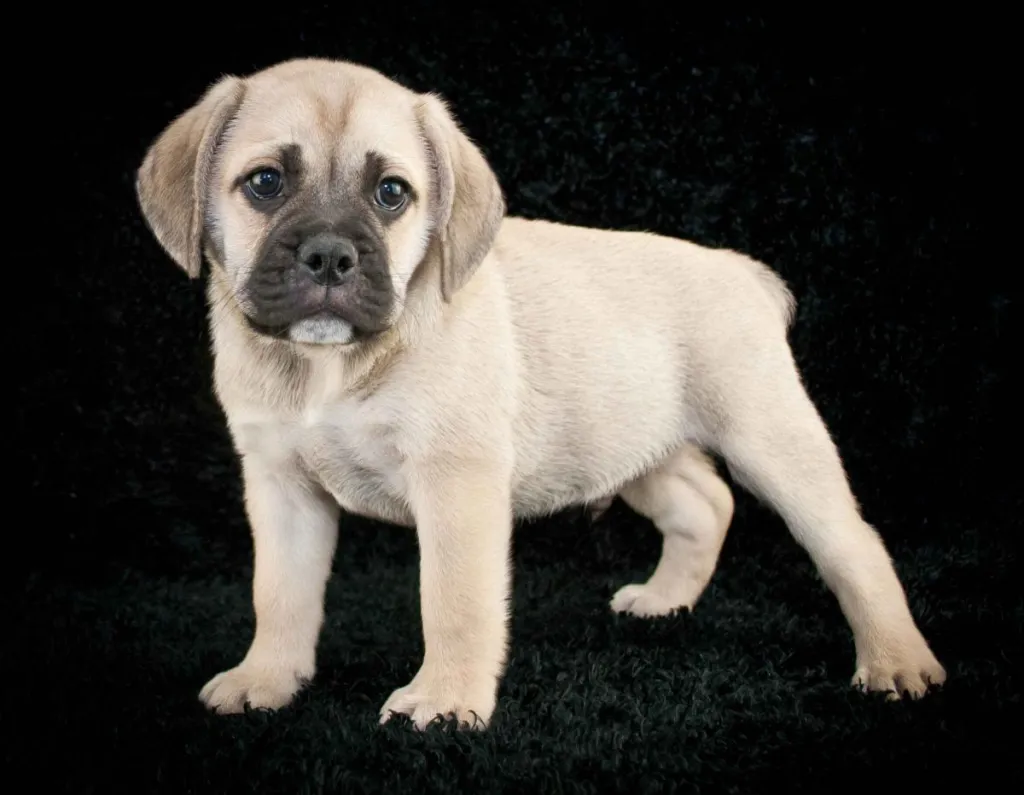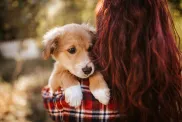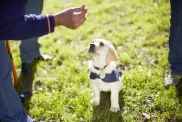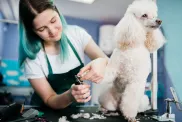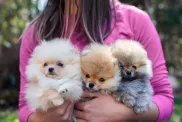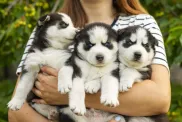The Beabull is a medium-sized designer cross between the Beagle and the English Bulldog breeds. Loyal, curious, and loving, these pups inherited some of the best qualities from both of their parents. The Beabull doesn’t go by many other names, though some people might just call them Beagle-Bulldog mixes.
These cute pups are quite versatile and can adapt to both apartment living or a home with a backyard to run in. Though their short, stout body types may lead you to believe they are lazy, these dogs will get bursts of energy and enjoy a game of fetch or a trip to the dog park. The Beabull bonds well with their owner and every member of the family, and they’re fit for either single- or multi-person family households. These loving pups are protective and playful, and they can be the perfect companion for you.
Beabull characteristics
- Height: 12 to 16 inches tall at the shoulder
- Weight: 30 to 60 pounds
- Lifespan: 10 to 13 years
Coat and color variations
The Beabull, a mix between a Beagle and an English Bulldog, typically sports a short, smooth coat that is easy to maintain. Common colors include white, brown, black, fawn, and brindle, often combined in unique patches or patterns. Some Beabulls inherit the distinctive wrinkled skin of the Bulldog, while others may feature the tri-color pattern of the Beagle.
Beabull physical attributes
Size and build
- Size: Medium-sized dogs, weighing 30–60 pounds and standing 12–16 inches tall.
- Build: Stocky and muscular, with a sturdy frame.
Coat texture and colors
- Coat: Short, smooth, and low-maintenance.
- Colors: Wide variety, including white, brown, black, fawn, brindle, and tri-color patterns.
Other physical characteristics
- Face: May feature wrinkles and a slightly pushed-in nose from the Bulldog parent.
- Ears: Medium-length, floppy, and soft like the Beagle’s.
- Feet: Compact, with strong, rounded paws.
- Tail: Medium-length, often slightly curved or straight.
- Eyes: Large, round, and expressive, usually brown.
How big does a Beabull get?
A Beabull typically grows to be a medium-sized dog, with adult weights ranging between 30 to 60 pounds and heights of 12 to 16 inches at the shoulder. The exact size of a Beabull depends on the genetic influence of the Beagle and English Bulldog parents, as well as individual factors like diet and activity level.
Beabull personality
Beabulls are known for their affectionate and friendly personalities. They are social animals who thrive on companionship and are particularly fond of children, often displaying patience and gentleness. Their playful side, inherited from the Beagle parent, ensures they are always ready for a game or adventure. At the same time, they also have a laid-back, sometimes stubborn streak from their Bulldog lineage.
Despite this independent tendency, Bulldog Beagle mixes are intelligent and eager to please, which makes them trainable. With consistent, positive reinforcement, they can learn commands and tricks effectively. Beabulls are typically good with other pets, though early socialization is important to foster harmonious relationships. Their cheerful, loyal, and loving demeanor makes them a favorite choice for households seeking a devoted companion.
Temperament and behavior traits
- Affectionate: Loves being around family members and thrives on attention.
- Friendly: Gets along well with children and other pets when socialized properly.
- Playful: Enjoys games and activities but also appreciates downtime.
- Intelligent: Capable of learning quickly but can exhibit a stubborn side.
- Loyal: Forms strong bonds with their owners and often seek their approval.
- Social: Prefers being around people; may experience separation anxiety if left alone for too long.
- Stubborn: Inherited from the Bulldog side, requiring patience during training.
- Protective: May show a slight guarding instinct, but they are typically not aggressive.
Training and socialization
Early socialization and positive reinforcement training are crucial due to their intelligence and potential stubbornness. Of course, their intelligence allows them to pick up commands quickly, so early training is key to establishing good behavior from the start. Use praise, treats, and affection to reward desired behavior. Beabulls respond well to positive reinforcement, and this approach will keep them motivated and engaged.
Training tips:
- Be Consistent: Consistency is crucial in training. Use the same commands and routines to avoid confusion. This helps your Beabull understand what is expected of them.
- Keep Training Sessions Short and Fun: Beabulls are intelligent but can lose interest if training sessions are too long or repetitive. Keep sessions short (10-15 minutes) and engaging with varied activities.
- Mental Stimulation: Incorporate puzzle toys, obedience training, and interactive games into their routine to challenge their mind. A bored Beabull can become restless or destructive. Once basic obedience is established, teach more advanced commands or tricks. Their intelligence makes them excellent candidates for agility training, fetch, or scent games.
Beabull care
As with all dogs, it’s important to keep up your Beabull’s regular veterinary checkups to detect any health concerns early. Your vet can help you develop a care routine that will keep your dog healthy.
How much exercise does the Beabull need?
A couple of walks every day, totaling around 45 minutes, should do the trick to keep your Beabull content and healthy. However, due to their intelligence inherited from their Beagle ancestry, incorporating obedience tasks into the exercise mix is greatly beneficial to keep them interested and mentally stimulated. Both parent breeds are prone to obesity, so ensuring they receive adequate exercise is essential.
Beabull grooming needs
Beabulls are relatively low-maintenance when it comes to grooming, thanks to their short, smooth coats. They shed moderately year-round, so regular brushing helps minimize loose hair and keeps their coat healthy and shiny. Since Beabulls are prone to skin sensitivities and wrinkles (inherited from the Bulldog parent), special attention should be paid to keeping their skin clean and dry to prevent infections. Routine ear cleaning, nail trimming, and dental care are also essential to maintain their overall health and hygiene.
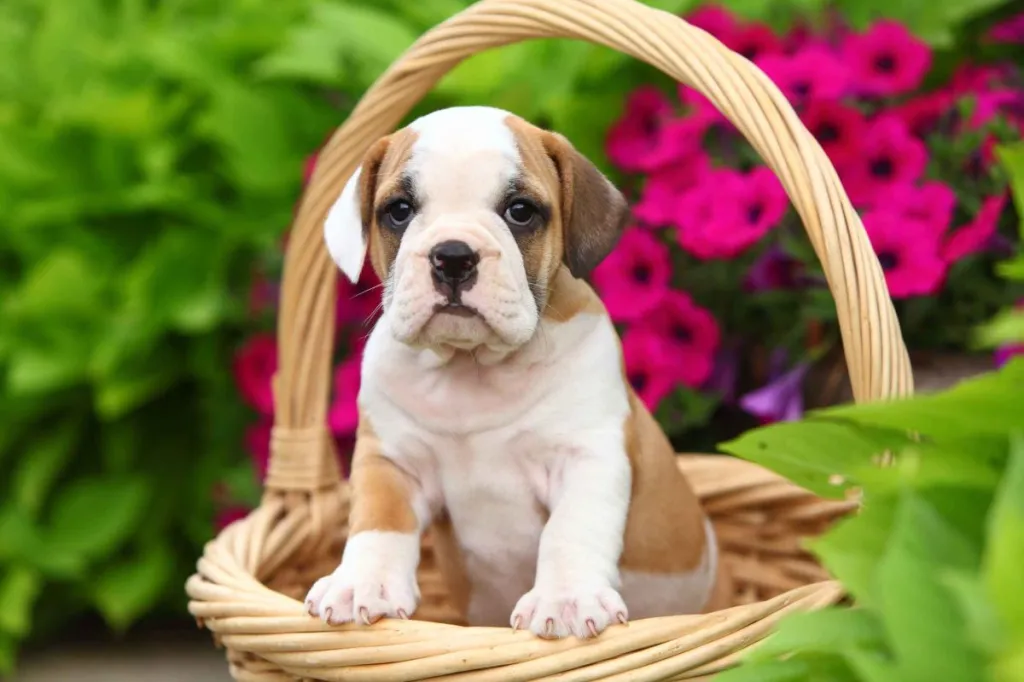
How to groom a Beabull
- Brushing: Use a soft-bristle brush or grooming mitt 2–3 times a week to remove loose fur and promote a healthy coat.
- Bathing: Bathe once every 4–6 weeks or as needed with a gentle dog shampoo to avoid drying out their skin.
- Wrinkle Care: Clean between skin folds with a damp cloth and dry thoroughly to prevent moisture buildup and infections.
- Ear Cleaning: Check ears weekly for debris and wipe them gently with a vet-approved cleaner.
- Nail Trimming: Trim nails every 3–4 weeks or when you hear clicking sounds on hard surfaces.
- Dental Care: Brush teeth 2–3 times a week with dog-specific toothpaste to prevent tartar buildup and maintain oral health.
Feeding and nutrition
An ideal Beabull diet should be formulated for a medium-sized breed with moderate energy levels. It’s important to avoid overfeeding, as Beabulls are prone to obesity, which can lead to joint problems, heart issues, and other health complications. Along with maintaining an appropriate diet, ensuring they get enough exercise is key to their overall health and weight management.
Choose a high-quality dog food that features real meat as the first ingredient, along with wholesome grains, fruits, and vegetables. Look for formulas that provide a balanced mix of protein, fats, and carbohydrates. Protein is essential for muscle growth and repair, while healthy fats support skin, coat, and overall energy levels. Avoid foods containing artificial preservatives, colors, or low-quality fillers such as corn or soy.
- Meal Size: Beabulls typically need 1 to 2 cups of high-quality dry dog food daily, depending on their age, weight, and activity level.
- Feeding Frequency: Divide their daily food into two meals, one in the morning and one in the evening, to help prevent overeating and manage weight.
Beabull family compatibility
Beabulls are highly compatible with families, which makes them a great choice for households with children and other pets. Their affectionate and playful nature means they enjoy spending time with their human family members, and their gentle temperament makes them particularly good around kids.
Beabulls thrive in environments where they receive plenty of attention and companionship, as they can become anxious if left alone for long periods. They are generally friendly with other animals, especially when introduced early, and socialized properly. Their moderate energy level allows them to enjoy active play but also appreciate quiet downtime, making them adaptable to various family lifestyles.
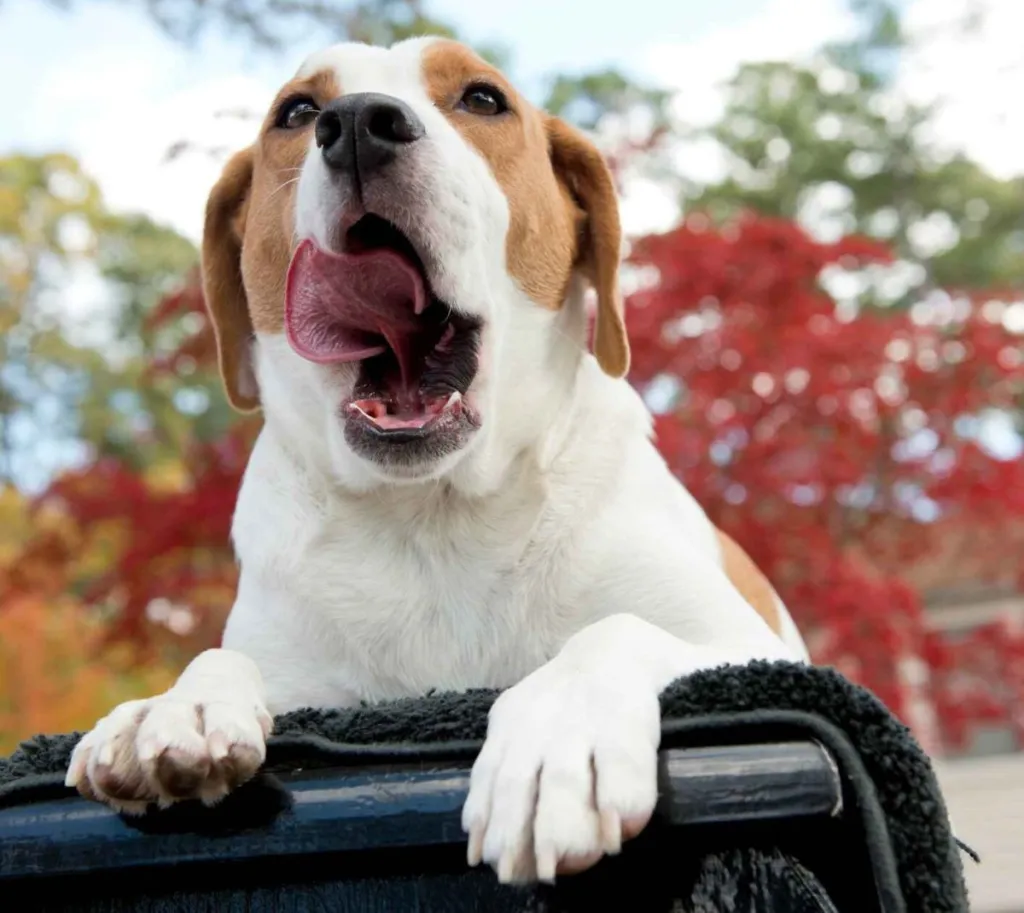
Health issues
The Beabull is a fairly healthy mixed breed, but like all dogs, it can inherit health issues from its Beagle and English Bulldog parents. While many Beabulls are generally healthy, some may be more prone to certain conditions, which makes regular veterinary checkups and good care essential. Common health problems that Beabulls may experience include:
- Obesity: Due to their love of food and sometimes low activity levels, Beabulls can easily become overweight, leading to other health complications.
- Hip Dysplasia: A genetic condition where the hip joint doesn’t develop properly, leading to pain and arthritis, particularly in larger dogs like Beabulls.
- Digestive Issues: Beabulls may inherit sensitive stomachs, leading to problems like gas, bloating, and difficulty digesting certain foods.
- Hypothyroidism: A condition where the thyroid gland doesn’t produce enough hormones, potentially leading to weight gain, lethargy, and skin issues.
- Intervertebral Disc Disease (IVDD): A condition where the discs between the vertebrae in the spine slip or degenerate, causing pain or loss of movement, especially in the neck or back.
Beabull rescue groups
It may be hard to find a breed-specific rescue for Beabulls because they are a mixed breed. However, you may want to try Beagle or English Bulldog breed-specific rescues, as they often care for mixes, as well. Here are some rescues you can try:
If you choose to buy a Beabull puppy, finding a reputable dog breeder is crucial. Reputable breeders are committed to breeding healthy, well-socialized puppies that will make great companions. They will screen their breeding stock for health problems, socialize their puppies from a young age, and provide you with lifetime support.
